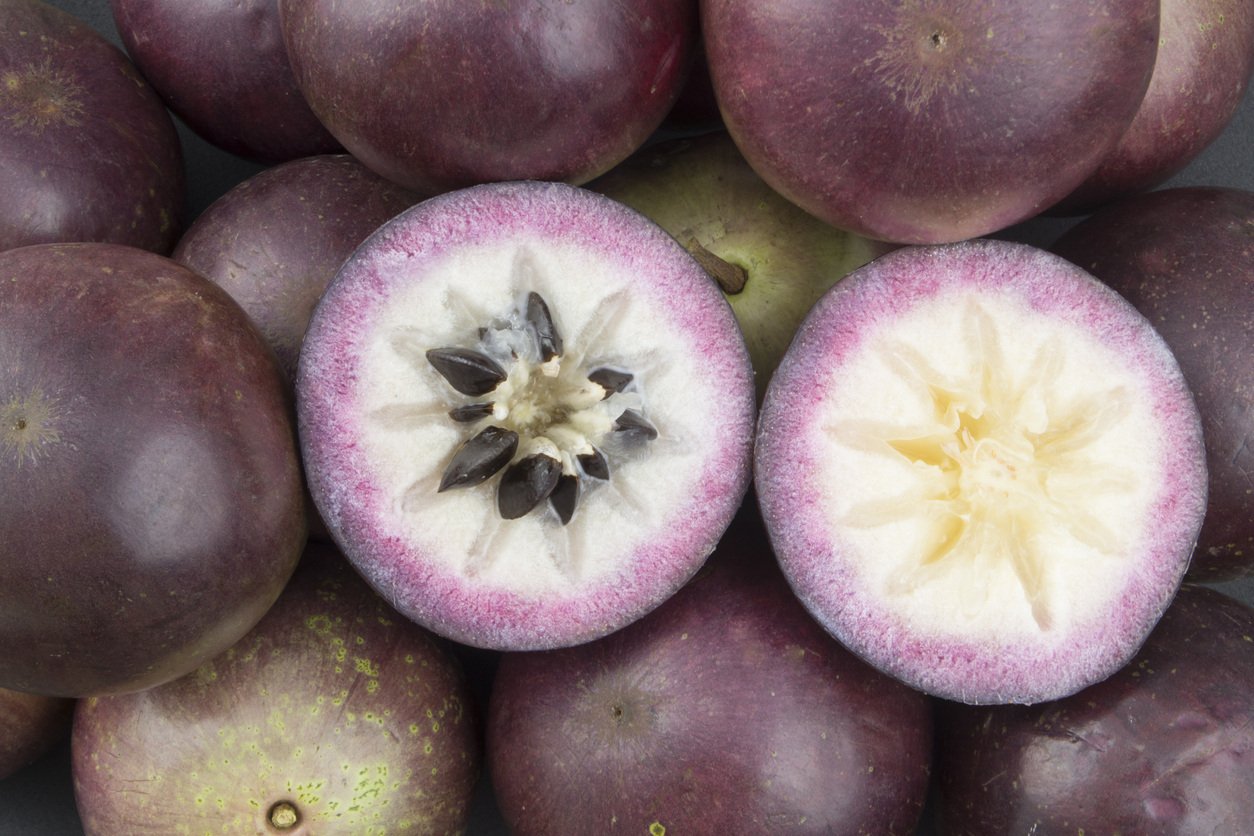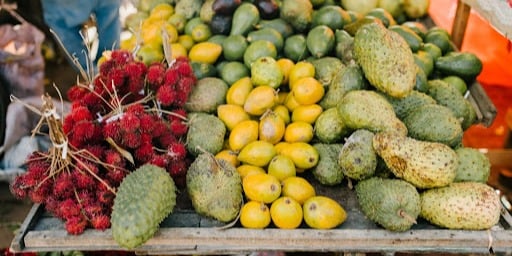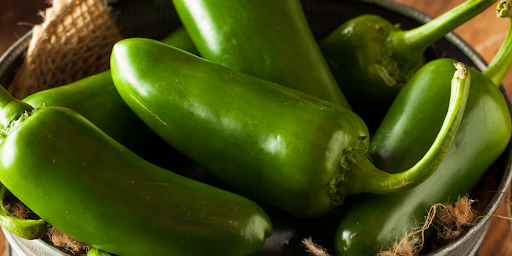What on Earth is That? Costa Rica Fruit - Part 1

If you’ve never wandered through a Costa Rican feria (which is a market) on market day, you likely have no idea the sheer volume of fruits and veggies that this country produces.
There are things for sale that look like they were dropped from alien planets. The sights, sounds, and smells of this beautiful place and its fruits are so completely overwhelming that even now after almost 3 years I still have no idea what some of them are.
I decided that it’s time to change that, so I’m going on a mission… and I’m going to drag you along for the ride… are you ready?
The Fruits of Costa Rica
There are a lot of these, so this could take a while, but the possibilities are rather exciting. I’m going to leave the ones we are more familiar with to the end, and go right to the good stuff.

Let's start with the one I think of as the alien fruit. You will understand why in a second when you look at the picture.
Mamón Chino or Rambutan
Season: July-October
Description: A bright red casing covered in soft yellow-green spikes, with an inside that looks like a peeled grape. It has a hard pit in the center
Flavour: This is hard to describe, it’s slick, sweet and tart at the same time, like a tangy grape, with a soft sweet smell
Use: This is a snack food, people tend to buy them by the bag and eat them while they drive. (You have to be careful with children who could choke eating them because they are very small and slippery)
To eat a Mamón chino, the casing is peeled with fingers or teeth and the flesh is sucked from the pit. You will quite often find trucks parked on highways or close to the onramps full of bags of this funky-looking fruit. It’s a favorite snack of the local truckers and deliverymen.
Fun Fact: The seeds are used in both dyes, and the production of soap.
Mamón
Season: July-October
Description: Smooth and green on the outside,
Flavour: Similar to the Mamón chino
Use: snack food, canned, used in the making of soft drinks and alcoholic beverages
The Mamón is a close cousin to the Mamón Chino, so the flavor is really close but for whatever reason the alien fruit version is much more popular. It’s interesting to note that the pits can also be roasted and eaten, similar to a cashew. The fruit is rich in iron and phosphorus and has mild laxative properties… maybe I just answered my own question as to why they aren’t as popular… hmmm…
Caimito or Star Apple
Season: late January-April
Description: usually purple on the outside (but can also be greenish brown) with a creamy white centre
Flavour: the flavor of star apple has been described as a cross between a persimmon, apple and mango
Use: delicious fresh fruit snack

The caimito earned its name by virtue of the fact that it has a star in the centre when it's cut open, and by the fact that it is about the size of an apple. It has a soft creamy consistency, which is often described as similar to soft-serve ice cream. The skin isn’t edible, so the flesh is scooped out and eaten.
Guanábana or Soursop
Season: almost year round (as a drink)
Description: green and lumpy, almost cactus-like with an irregular shape with a white center naturally sectioned of like a pineapple *The seeds are not edible
Flavour: imagine a slightly sour pineapple ice cream with a dash of strawberry thrown in and you’ll come close
Use: served as a sweet juice in water or milk, smoothies, candies and ice cream flavoring

Fun fact: The leaves of the Guanábana are often used as an herbal medicine in Indonesia where they use it to make a tea with anti-inflammatory properties, and as an alternative treatment for cancer, although there is no clear medical evidence to support that particular effect.
Cas or Sour Guava
Season: December-February, June-August
Description: a rather ugly looking green ball
Flavour: a combination of lemon and grapefruit
Use: for drinking, either as a blended drink, or in a lemonade-like form
As an interesting aside, sour guava is often used in the production of certain types of alcohol and craft beers!
Carambola or Star Fruit
Season: July-August
Description: This fun fruit looks exactly the way it sounds, bright yellow and shaped like a star!
Flavour: It can be sweet, but most commonly has the texture and dry-mouth tartness of a really sour apple. The consistency is like that of a grape.
Use: Commonly used as decoration on the side of a smoothie or adult beverage, but can also be cut up and put into a salad or blended into juice!
These fruits are used all around the world! In Southeast Asia starfruits are stewed with sugar and cloves. In Australia, it is commonly mixed with chopped spices and made into relishes and preserves.
*** Note: It’s best not to eat or drink starfruit if you suffer from kidney problems
Piña or Pineapple
Season: year-round
Description: tubular fruit ranging from green-yellow with naturally sectioned pieces, each with a small spike protruding from it, with a large collection of flat green leaves growing in a cluster from the top of the fruit.
Flavour: very sweet and juicy with a mild ‘dry-mouth’ effect on the tongue
Use: extremely versatile, used as a fresh fruit, in desserts, smoothies and juices as well as in cocktails
-1.png?width=1080&name=Fotos%20Ocotea%202%20(89)-1.png)
Fun Fact According to Wikipedia, pineapple is the third most important tropical fruit in the world. It is also Costa Rica’s second largest export. In 2017, nearly 65% of the world’s pineapples came from Costa Rica where sustainable practices are being implemented to maintain the healthy pineapple production for the years to come!.
Manga or Mango
Season: March-June
Description: Manga tommy mangoes have an orangey-red flesh, the more common manga mora (my favorite) has bright orange. But in different stages of ripeness, the skin ranges in color from green/yellow to reddish/purple
Flavour: manga tommy are tangy, whereas manga mora are sweet
Use: mangoes are really versatile, they are used as fresh fruit, in drinks and smoothies, baked into desserts (in much the same way we use peaches), diced and mixed into salads or my favorite… mango salsa which is often served with fish (click the link for a fabulous mango salsa recipe). Ticos also like to slice up the green, unripened mangoes and sprinkle them with salt and a squeeze of lime. In fact, you can often find street vendors selling bags of mango verde on the beaches as a snack.
You may think you know mango, but I can tell you from experience, the fruit that arrives in North America two weeks after it was picked green and allowed to ripen in the hold of a ship is nothing like a mango that ripens on the tree and is picked right before you eat it. These mangoes are so full of juice you need a bib to eat them, and they are absolutely delicious!
Papaya
Season: year-round
Description: large fruit that has a yellow/green shell with a rich orange-red coloured flesh. Filled with a centre of black seeds in a pulp (similar to cantaloupe)
Flavour: the creamy flesh of papaya has a taste like a cross between a cantaloupe and a mango, while the seeds can also be eaten and have spicy, sharp flavour
Use: Another fruit that can be used for almost anything, it is cubed and stewed in savory dishes as well as being eaten fresh, mixed into salads and made into juice and smoothies.
Papaya is high in vitamins A, B and C, so it is a common ingredient in healthy fruit smoothies around the world. One great example is in Indonesia, where the unripe green fruits and young leaves are boiled to make lalab salad.
Since this is only about half of what I found on my hunt for Costa Rican fruits, I’m going to save the rest for Part 2. I think I’m getting writer’s cramp, and I have a sudden urge to find a snack.
Until then, Pura Vida!




